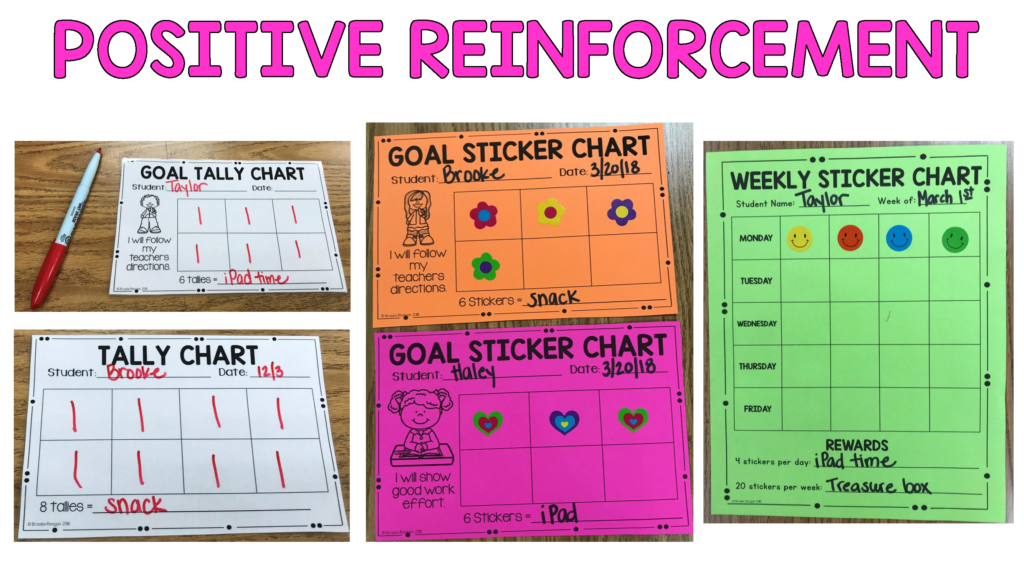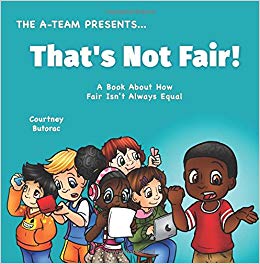I truly believe that most students don’t need a behavior plan! 95% of students will have great behavior if you set up expectations early on and praise them when they get it right. So what about that other 5%? Those one or two students that don’t have the same level of self-control? Could an individual behavior plan be right for them?
Regardless of where you teach, you will always have a couple of students who struggle to follow the rules. Being realistic and having individual behavior plans ready will make your life (and your student’s life) much easier!
Mistake #1 – I decided to get rid of my behavior clip chart and focus solely on expectations. This worked for most of my class, but I always had a couple of kids who needed more. I ended up putting the behavior clip chart back up by the beginning of October and I was back to square one.
Mistake #2 – Early in my career I decided to have blanket consequences for a rule that was broken. If a child moved down to yellow, they would have a time-out, red meant a note home, etc. Regardless of the consequence, the negative behavior would continue because I wasn’t getting to the root of the problem.
Mistake # 3 – Feeling like I was an ineffective teacher because I struggled daily with the same student.
Mistake #4 – Suffering in silence and not reaching out to my colleagues. Assuming that I alone had these problems and that everything ran like clockwork in their classrooms.
Do any of these sound familiar? I hope I’m the only one who has thought or felt this way, but I have a feeling that a lot of teachers (especially ones new to the profession) can relate. I want to share my thoughts on individual behavior plans in the hopes that I can alleviate some stress from your life and let you know that you are not alone in these struggles!
Looking to get rid of your clip chart? Check out this post I did about clip chart alternatives:
It won’t take too many days into the school year to figure out which students might need an individual behavior plan. Some students may be nervous or scared, but you’ll usually have at least one who flat out isn’t interested in the rules you are laying down.
Once you figure out who might need a little bit of extra behavior support it’s time to start documenting. I made a super simple chart that you can download onto your Google Drive. It tracks the following things:
I’ve said it before and I’ll say it again – students rarely misbehave just for the heck of it! There are reasons behind it and very often triggers that can be avoided. If you want a free copy of this spreadsheet, click on the link below.
![]()
The key to an individual behavior plan is building a relationship with the student. Figuring out their likes and dislikes, their triggers, and their motivation. Once you know what motivates them you can begin to figure out a plan.
Every student is different, I’ve had students motivated by extra time to do puzzles, extra time with me, positive notes home to parents, rewards at home, and praise in front of the principal or other teachers.
These examples and many more are not what would motivate me as a student. They weren’t necessarily things that I would think about when creating a behavior plan. This is why it’s so important to talk with the student and observe their interests.
If you would like additional ideas for rewards, check out this post I did all about classroom rewards (many that don’t cost any money)!
Sticker charts are a good way to motivate students, track progress, and communicate with parents. I LOVE these sticker charts from Brooke Reagan on TPT!

It is so important to customize the intervals for when each child gets their incentive. Some students need daily incentives, while others can extend their wait time. As the student’s behavior improves, the length between incentives should increase.

The most important aspect of an individual behavior plan – DO NOT SET YOUR STUDENTS UP TO FAIL!
Do not wipe out points, stickers, or smiley faces at the end of the day! Keep a running total so that one bad day doesn’t ruin any momentum!
Make a running goal such as when you receive 5 stickers you will get an incentive, don’t limit it to one day.
Consequences should be tailored to each student’s needs. I firmly believe that recess should never be taken away from a student! They need to get their energy out and have some decompression time. That being said, if a student is misbehaving during recess they might need some time to cool down in the middle of playtime.
When I start to see behavior go awry I pull the student to the side and give them a choice. Either they stop the negative behavior or they will receive a clearly stated consequence.
This puts the ball in their court and allows them to decide how to proceed. They know what consequences will occur and at that point, they are making a conscious decision about their future. Here are some appropriate kindergarten consequences:
The key to consequences is following through! If you let a student know what a consequence will be and then don’t apply that consequence after the negative behavior continues then you lose all credibility.
I can’t tell you how many students have tested me at the beginning of the year. Sometimes kids have a lot of empty threats at home, so they’re not used to the follow-thru. Once they learn that you mean business, behavior dramatically improves!

These are my best tips and tricks to help you set up an individual behavior management system! Comment below and share other tactics that have worked for you that might help another teacher!